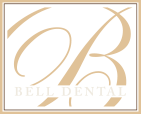
Gum Grafting
Gum recession is a gradual condition which makes your teeth appear longer and causes sensitivity, discomfort, and even tooth loss.
A gum graft protects your teeth against the dangerous effects of gum recession and can result in a more even and attractive gum line.
So why should you restore your gums with a graft?

Gum Grafts Can Enhance Your Smile and Improve Your Oral Health
Prevent Bone and Tooth Loss
Gum recession is often caused by periodontal disease. Both conditions are chronic and, left untreated, will continue to cause issues. A gum graft can halt recession and improve your gum health so you can avoid tooth loss.
Eat and Drink Comfortably
When gums recede, they expose the roots of your teeth, making eating and drinking uncomfortable or even painful. Covering the roots with a graft can relieve discomfort and let you enjoy your favorite foods and drinks again.
Feel More Positive about Your Smile
Using a gum graft, your dentist can sculpt a more even and smooth gum line so you can smile with confidence.
If Your Gums are Receding You Are Not Alone

More than 50 percent of the population struggles with gum recession. More than 88 percent of patients over the age of 65 have gum recession that affects at least one tooth.
*According to research published in The Journal of the American Dental Association.
It Sounds Expensive Is a Gum Graft Really Worth it?
Since gum recession and gum disease are medical conditions, dental insurance often covers part or all of the cost of gum grafting. Without insurance, the typical price of a gum graft ranges from $600 to $1,200 to treat a small area or the base of one tooth. If you want gum contouring done at the same time to create a more pleasing gum line, the total cost rises to about $1,000 to $3,000 per area. For most patients, a gum graft is an inexpensive and effective way to prevent tooth loss and protect the health of their smiles.
Restore Your Gum Health in a Few Easy Steps
Your dentist or periodontist will numb the treatment area using a local anesthetic. If you are nervous or have a complex case, you can often request sedation.
Your doctor will collect a small amount of gum tissue from near the receded area or the roof of your mouth.
Using sutures, the doctor will attach the graft to the treatment area.
You can return to work and other daily activities the same day or the next day, depending on how you feel.
Your gums will fully heal after one to two weeks. While you recover, eat soft, cool foods and avoid anything hot, sharp, or spicy. Don’t brush or floss the treated area until it has fully healed.
You Have Options
Advancements in dental technology have led to a few alternative methods for restoring receded gums. Many dentists have started offering LANAP (a laser-assisted procedure designed to stimulate tissue regeneration) and the Chao® Pinhole Surgical Technique as minimally invasive alternatives to traditional gum grafting. However, not all dentists offer these new procedures and they may not be effective for more advanced and widespread gum recession.
Gum recession affects both the health and appearance of your smile. If you are concerned your gums are receding, schedule an appointment with your dentist to ask about a gum graft.







